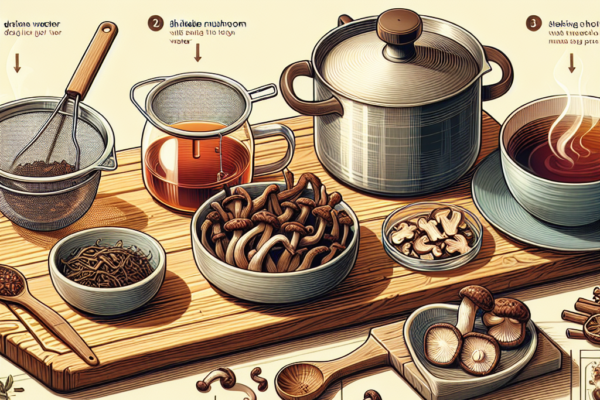Blog
Coffee Grounds – Mushroom Substrat
Coffee grounds offer a rich source of nitrogen and other nutrients that oyster, shiitake, and other mushrooms can benefit from. They are also a relatively easy and affordable mushroom substrate.
Add coffee grounds to a compostable liner or growing container. Make sure that the liner has holes in it to allow excess water and spores to drain through.
How to Grow Mushrooms on Coffee Grounds
Growing mushrooms on coffee grounds is easy, fun and a great way to reduce food waste. Mushrooms need a rich source of nutrients, and the spent coffee grounds provide a perfect medium for their growth. It’s a popular technique for oyster mushroom (Pleurotus spp) cultivation, but many other varieties can also be grown in this manner.
The coffee grounds are already pasteurized through the brewing process, which allows you to skip the sterilization step and go straight to inoculating the grounds with your mushroom spawn. This makes it a popular choice for urban mushroom farmers who want to avoid the expense of buying sterilised substrate.
To get started, you’ll need a bag of coffee grounds and some mushroom spawn. You can find this at most organic grocery stores or through online sellers. It’s best to buy a high-quality oyster mushroom spawn as these are more likely to grow well in this type of habitat. If you’re unsure of what to look for, consult an experienced mushroom grower at your local farm or check online resources.
You’ll need to hydrate the coffee grounds before you inoculate them with spores. To do this, mix the grounds with about 1.5 liters of water (depending on how big your bags are). Soak the mixture for 1-2 days before use.
Once the ground is hydrated, add your mushroom spawn and mix thoroughly. If your spawn is in clumps, break them up gently with a clean or sanitized tool to help them spread throughout the mix. Once everything is evenly distributed, pour the spawn into each filter patch bag.
You can use any kind of bag or container for your mushroom patch, but liners are preferred as they reduce contamination and make it easier to keep the growing medium moist. Liner options include 2 litre freezer bags, empty milk or ice cream containers and even a cardboard box with holes cut in it. For a quicker hydration time, soak the liner with water a few days before use. Be sure to mist the liners a few times a day to prevent the mycelium from drying out.
Getting Started
Coffee grounds are a great mushroom substrate that offer many advantages over traditional methods of growing mushrooms. They are easy to work with, don’t require sterilisation or pasteurisation and can be collected for free from local cafes. Additionally, they contain a high level of nitrogen that is readily used by mushroom species.
For these reasons, many hobbyist mushroom farmers choose to grow mushrooms on coffee grounds as an alternative to other commercial substrates. However, growing on non-sterilised substrates comes with a number of risks that may be detrimental to the health of your crop. Contamination, for example, can deplete the nutrients available to the mushroom and cause it to break down early, resulting in poor fruiting.
To minimise contamination when using coffee grounds, it is advisable to use an organic composting process that raises the substrate temperature above 120degC. This method has been shown to destroy any germs and pathogens that are present in the substrate. However, this method is not ideal for growers who cannot afford the time and equipment to use an oven to sterilise their substrates.
Alternatively, growers can use coffee grounds as a substitute for other types of organic substrate, such as hay or straw. In addition to reducing contamination risk, this can also reduce the cost of the substrate significantly.
The first step in the cultivation of mushrooms on coffee grounds is to prepare your substrate by mixing it with a suitable spore inoculum. This is best done by hand, as it ensures that the spores are evenly spread throughout the substrate. The substrate should then be placed into a container that can be lined with permeable plastic or cardboard, and poked with holes in the bottom to allow excess water and spores to drain away.
Once your substrate is lined, you can fill it with your chosen mixture of spawn and ground coffee. Make sure to shake the bag before sealing it shut. Next, place it somewhere warm to begin colonisation. Once the mycelium has fully colonised the substrate, it should start pinning within a week or two.
Growing Mushrooms on Coffee Grounds
Coffee grounds are a great material for mushroom cultivation. They contain plenty of nitrogen for protein synthesis and mycelial growth, as well as carbohydrates for energy. They are also rich in minerals, such as potassium, phosphorus, and calcium. Additionally, their fine particle size offers a high surface area for colonization by mushroom mycelium. For this reason, it is important to mix coffee grounds with supplementary materials like straw or sawdust in order to improve aeration.
A typical ratio is 70% coffee grounds, 20% straw, and 10% mushroom spawn. For best results, the mushroom spawn should be broken up into small pieces. This increases its surface area, which in turn promotes faster colonization. Additionally, the mushroom spawn should be hydrated before mixing it with the coffee grounds. A common method for doing this is to soak the spawn in water overnight, then mix it with the coffee grounds in the morning.
Once the spawn has been mixed into the coffee grounds, it should be misted with water every two days. This is done to maintain a humidity level of about 85%. Additionally, holes should be punched into the compostable bag or other liner in which you are growing your mushrooms. This helps to create air flow in the substrate and prevents contamination from unwanted spores or other foreign materials.
After about a week, you should see mushroom “pinheads” start to form. At this point, you should move your bags into a light location with indirect sunlight, such as a windowsill. Additionally, you should spray the bags with a light coating of water each day to encourage fruiting.
After about a month, you should notice that your mushrooms are beginning to mature. It is at this point that you should start to harvest them. The amount that you can harvest at any one time will depend on how full the bags are and what variety of mushrooms you are growing. Be sure to wait until the edges of the mushroom caps start to curl up, then pull them gently out of the bags and into a clean bowl.
Harvesting Mushrooms on Coffee Grounds
Mushrooms are a perfect example of how waste can become an asset when it’s repurposed. Unlike many other urban agriculture crops, mushrooms do not require large indoor spaces and can instead be grown in repurposed rooms all year round. Furthermore, they can be cultivated using readily available and sustainable materials such as coffee grounds. These waste products provide a rich source of nutrients for the mushroom mycelium and are easily converted into a fruiting substrate by mycelia.
A typical city cafe can produce more than 20kg of used coffee grounds each day, which are mostly thrown away. These grounds can be repurposed into a nutritious mushroom grow medium for oyster (Pleurotus ostreatus) and other wood-loving strains such as shiitake and lion’s mane.
The best way to utilize these coffee grounds is by using a mixture of grounds and hardwood sawdust. This material has a higher lignin content than traditional substrates and will promote a faster colonization of the mycelium. This is especially important since wood-loving mushrooms require a high temperature range for colonization and fruiting.
Before mixing the materials, it is important to sterilize the growing container. To do this, simply place the jar or bucket into a steamer and heat it until the outside surface of the jar is completely covered with a layer of white steam. To avoid contamination from the spores of bacteria and molds present on your hands or breath, it is recommended to wear gloves and a face mask when handling the coffee grounds and spawn.
Once the jar is sterilized, it is time to add the spawn. Grain spawn works well with coffee grounds because it is easy to mix and provides a high nutrient content. The spawn should be mixed thoroughly with the substrate and, to speed up the process, it is recommended that the spores be broken up into smaller pieces before mixing.
Once the spawn is evenly spread over the substrate, the jar should be covered with a lid and placed in a cold environment. It is recommended to fan the jar with air 2-3 times each day to prevent spore contamination. It will take around 8 days for the spores to germinate and start producing mushrooms.




